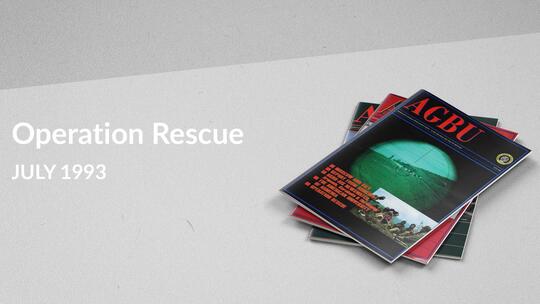by David Zenian
KIEV - Between a hotel room and the open air cornerstone of what once was a 14th century church, the Armenians of Kiev are mobilizing into a community in the new Diaspora which until two years ago was nothing but part of the pseudo-nation called the Union of Soviet Socialist Republics.
"Until a few years ago, we somehow did not think about our ethnicity. We were all Soviets, whatever that meant. Times have changed, and we are becoming as much a Diaspora as you are in the United States," said Dr. Laura Mkhitarian, a Gyumri-born cardiologist who came to Kiev for her post-graduate work in 1970 and stayed on.
The downtown Kiev hotel room is the temporary "home-office" of Armenian Chargé d'Affaires Hratchia Sylvanian. The cornerstone of the 14th Armenian church is the community's only place of worship.
On April 24 this year, the 78th anniversary of the Armenian Genocide, Sylvanian joined dozens of Kiev Armenians to mark the occasion, lighting candles and placing bouquets of long-stem red roses and tulips on the memorial plaque marking the place where an Armenian church once stood and which has since been replaced in 1776 by the Pokrovska Ukrainian Cathedral.
Only a few weeks since his arrival in Kiev, Sylvanian is already making his presence felt.
"We don't know what our 14th century church was called, but we know this was the consecrated cornerstone and that's why we come and pray here. The fact that we are here marking April 24 this year with the diplomatic representative of the independent state of Armenia is exhilarating. We do not have a church and we do not have a resident priest, but at least we are now free to meet here in peace. There were times we could not even do this," said Dr. Mkhitarian after a recent community meeting called to discuss ways of helping "our people" in Nagorno- Karabagh.
The "here" is one of Kiev's public libraries whose director and chief librarian, Terenig Yeremian, is an Armenian.
The Armenians in Ukraine trace their roots to 1257 when Armenian merchants first appeared on the Kiev scene along with Jews and Greek artisans.
Settling first in the western city of Lvov, where thousands of Armenians still live, the community spread to other parts of the country - gradually integrating with the majority population.
"First it was Ukrainianization, followed by Russianization and Sovietization. Another 50 years and we would have been wiped out. But thanks to the independence movements and the birth of a new Ukraine and a new Armenia, we are now Ukrainian-Armenians like you are American-Armenians. These are challenging times," Dr. Mkhitarian said in an interview.
One of these challenges is to organize the diverse group of several generations of Armenians many of whom are still at a loss with the very concept of community life.
"You are lucky in the United States. You have Armenian churches and schools and community centers. In the past, we were not allowed to have such institutions, therefore as a community we were nothing. In fact, the community concept did not exist," she said adding, "Now times have changed, and we can do what we want.
Despite such handicaps like the absence of a steady flow of information "or hard news" from Armenia, and a community infrastructure, Kiev Armenians are hard at work to mobilize their resources.
"The situation in Nagorno-Karabakh has been a uniting factor for the Armenians of Kiev," said Dr. Mkhitarian.
Despite the hardships, a group of activists got together two years ago and formed the Armenian Cultural Association which has since become the backbone of Armenian community life. Boasting a registered membership of about 5,000, the Association sponsored 80 children from Nagorno-Karabakh to spend several months in Kiev and other Ukrainian cities this year "to take their minds off the miserable conditions in Stepanakert and other towns and villages."
"The visit of the Nagorno-Karabakh children was a very uplifting experience for all of us. A lot of money was needed for the project, so we organized auctions, our children gave benefit concerts and we did other fund-raising activities. All these things really helped us get together as a community," Dr. Mkhitarian said.
"We Ukrainian Armenians are determined to keep the torch burning" she said.






